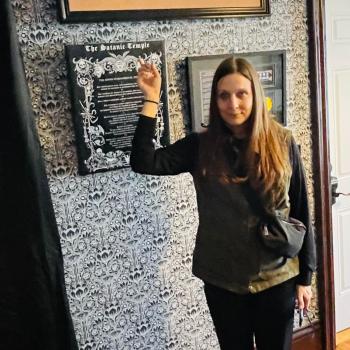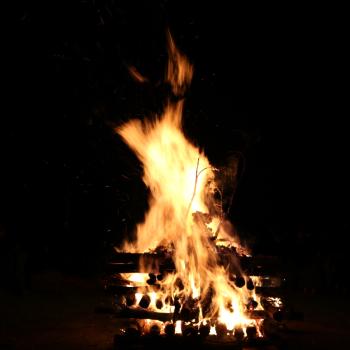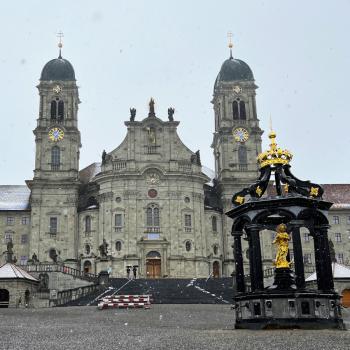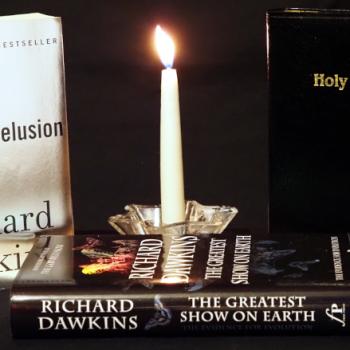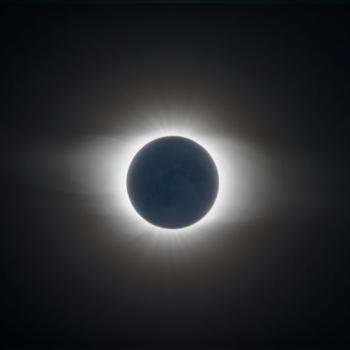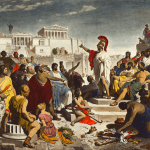Patheos is running a feature this month on Rites of Passage. This week, I’m pulling up five posts from my old Blogger site on the topic of initiation, making a few updates, and putting them up front for your consideration. Here’s the fourth, written after participating in an initiation in March 2012.
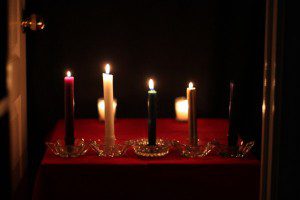 Last night I had the honor of participating in the initiation and dedication of a remarkable young woman. It was a ritual that drew on a long heritage of religious and fraternal initiations, some of which I’ve experienced and some of which I’ve found in books and on the internet. But a lot of it – including all of the object lessons – were written for this particular person.
Last night I had the honor of participating in the initiation and dedication of a remarkable young woman. It was a ritual that drew on a long heritage of religious and fraternal initiations, some of which I’ve experienced and some of which I’ve found in books and on the internet. But a lot of it – including all of the object lessons – were written for this particular person.
Last year I wrote about the purposes of initiation, how to plan an initiation and how to compose one. The process I described was exactly how we went about planning and composing this ceremony. The candidate began the process by asking about initiation, and it was clear in talking with her that she didn’t want to be initiated because she thought it was cool or because it would give her some kind of power or status. It was clear she felt a calling and initiation was a major step in answering that call.
In October seven of us met with her in a living room on a Sunday afternoon. We spent about an hour and a half peppering her with questions, such as
- Why do you want to be initiated?
- What do you hope to gain by initiation?
- How much of the initiatory process do you think you’ve already experienced?
- Are there elements of initiation you feel like you have to have or that you shouldn’t have?
- What commitments do you intend to make and how long will you promise to keep them?
- What are your thoughts on a ritual ordeal?
- if an ordeal involved physical pain, would you find that challenging or humiliating? Or something else?
- Do you have any conditions that might limit what you can do physically?
Her answers showed she was approaching initiation actively and maturely. She understood all the questions and had good, solid, reasonable answers – she had done some research and given the subject a good deal of thought. Then she left and the rest of us discussed what we had heard.
Over the next hour we bounced ideas back and forth before settling on a basic ritual structure, the object lessons, and the act of consecration. That evening I turned our notes into an outline and sent it back out to the group. We made a few changes, then started looking for source material for the elements where we wanted a historical link. Over the Winter break I compiled borrowed elements and wrote new ones. Cynthia edited it, we settled on a final draft, then assigned parts to those of us who would be officiating – which, as it turned out, were the exact same seven people who met to begin the process back in October.
Our candidate wrote her own oath of dedication. I provided some reference material (including an oath I made at one of my initiations), but I feel strongly that if you’re going to make an oath to a deity, only you can decide what you will or won’t promise to do. I’ve asked to preview candidates’ oaths in the past, but I didn’t feel the need to do that this time. I was not disappointed.
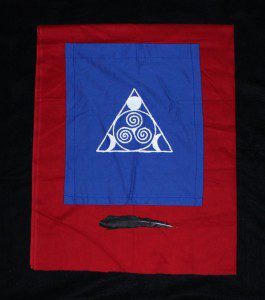 The actual content of the ritual is, of course, oath-bound. Suffice it to say it was well-presented, well-received, well-experienced, and as of about 11:00 last night, the Pagan world and the Goddess Morrigan have a new priestess.
The actual content of the ritual is, of course, oath-bound. Suffice it to say it was well-presented, well-received, well-experienced, and as of about 11:00 last night, the Pagan world and the Goddess Morrigan have a new priestess.
In a typical initiation in a Wiccan coven or Druid grove, the candidate has done a lot of work to earn membership in the organization. Whatever mystical benefits this initiation may bring, its primary purpose is to recognize the candidate as a full member of that order, in whatever grade or degree has been earned. There is a standard initiation ceremony which connects the candidate to the organization and to the lineage of its members going back to its founding. There is value – and when done right, power – in such initiations.
An eclectic Pagan group such as a CUUPS chapter has no such lineage, and it does itself no favors if it pretends it does. The benefit to that situation is that such a group is not locked into one particular initiation ritual. It can, as we did, precisely tailor an initiation to the needs of a specific candidate.
The intent and the outcome of a personalized initiation is different from that of a lineage-based tradition. It is not the recognition of a status earned. Rather, it is the recognition of a commitment: to learning, to practice, and to service.
Is a ceremony required to make such a commitment? Of course not. But as with all rites of passage, an initiation provides a clear, discrete step in the growth process. It is an emotional event based on myths and archetypes that helps the candidate deepen her commitment and reclassify herself from seeker to priestess.
This is the purpose of rites of passage. A boy may be physically capable of fathering a child at 12 or 13, but that doesn’t mean our wider society will recognize him as an adult. He can drive at 16, vote at 18, drink at 21, and pay reasonable car insurance rates at 25. A coming of age ceremony at 13 or 14 won’t change any of that, but it will help reprogram his brain with the change of status – it will help him realize he is becoming an adult with an adult’s capabilities and an adult’s responsibilities. An initiation is a similar process.
I am confident our former candidate and new priestess now understands what she has been called to be and to do. Because of the initiation ceremony, her commitment is not just an intellectual exercise, but also an emotional, mystical and magical process. She still has much to learn, but she is now ready to begin – to initiate – her Great Work and her True Will.
Despite all this, some will still question the authority of an eclectic group to perform initiations. I’ll address that subject in the next post.
Tomorrow: The Authority to Initiate





